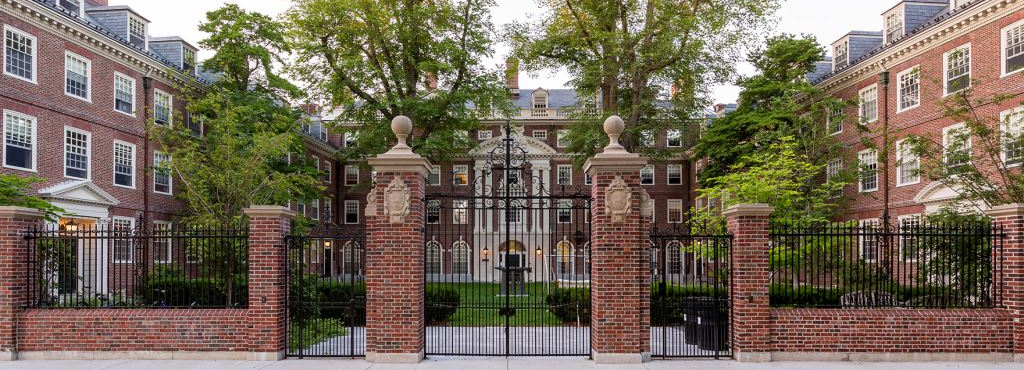30 Things to Expect Your Senior Year of High School
Three years of high school have made you an expert on all things secondary education, but you may not know what to expect on that first day of senior year. Luckily, we’ve compiled a list for you.

Join members of IvyWise’s expert team of former admissions officers as they share insights on the waitlist’s purpose and how it works, your chances of getting off the waitlist, and, most importantly, the next steps you need to take over the coming weeks.
Admissions rates remain exceptionally competitive at top colleges, with any schools reporting record-low admission rates for the class of 2027. What’s behind these competitive acceptance rates? The move to test-optional admissions policies may have encouraged some students who otherwise wouldn’t have applied to feel more confident hitting submit.
Even before many schools implemented test-optional policies, students were applying to more colleges on average than applicants had in years past. As a result, some applicants were gaining admission to multiple schools, which made yield (the percentage of admitted students who matriculate) more and more difficult to predict each year. The uncertainty associated with the pandemic has only exacerbated this trend, making it nearly impossible to gauge yield accurately.
According to a report by the National Association for College Admissions Counseling (NACAC), the average yield rate of colleges has dramatically declined over the past decade, from 48.7% to 33.6%. Even Harvard University is concerned with yield, with 83% of applicants matriculating to the class of 2026. While that is well above average, no college has 100% yield, and all institutions need a strategy to ensure they can fill those empty spots and enroll the most students possible – and that’s where the waitlist comes in.
Being waitlisted means that you will be considered for admission in the event that the school needs additional students for the incoming first-year class. According to NACAC, 43% of colleges surveyed reported using waitlists, up from previous years, with highly-selective colleges placing more students on those waitlists. However, being waitlisted doesn’t mean students are automatically considered for admission. At many schools, students must first tell the admissions office that they want to accept their spot on the waitlist. Of those students who chose to remain on the waitlist (50%), colleges only accepted an average of 20%, with only 7% of waitlisted students at the most selective colleges eventually gaining admission – down from 14% in previous years. At individual highly-selective institutions, this number can be dramatically lower, with some schools admitting zero students off the waitlist in certain years.
This can leave those students feeling confused and uncertain about where to enroll. Waitlisted applicants are usually considered for admission after enrollment decisions from accepted students are in. Because waitlists are not ranked, meaning that there’s no overall number one student who will definitely be admitted if there’s space, schools will need to evaluate their institutional needs before offering admission to waitlisted students. For example, if few engineering students enroll in the first-year class, a school might go to the waitlist and admit some students who applied as engineering majors. Because each school is different when it comes to building a well-rounded class, some colleges will admit students from the waitlist as early as April, while others wait until July or even August as they take time to assess their institutional priorities.
So what can waitlisted students do to improve their chances of being accepted off the waitlist? Our team of expert counselors, all of whom are former admissions officers at a variety of schools like Yale, Princeton, Columbia, NYU, Georgetown, Vanderbilt, and more, recommend the following tips:
Don’t wait to take action! While the situation may seem out of your hands, there are a number of steps to take now in order to improve your chances of getting off the waitlist and prepare for your backup plan. Talk to your college counselor, or consult an independent college counselor, to develop a plan of action.
Before contacting any colleges that have waitlisted you, take some time to consider whether you still want to attend the school. If the college where you are waitlisted is no longer one of your top choices, you should write to withdraw your name from the waitlist, opening up a spot for another student who wishes to remain on the list. If the waitlist school remains your top choice, accept your spot on the waitlist and move forward with these next steps.
Even if you choose to remain on the waitlist, you should still enroll at your next-choice school, because you don’t know if you’ll be accepted from the waitlist. Secure your spot at your next choice school by sending your non-refundable deposit (which you will lose if you decide to enroll elsewhere) by May 1st.
Before May 1st, write a Letter of Continued Interest (LOCI) to your admissions representative (the person responsible for evaluating applications from your high school) and copy a dean of admissions. Be upbeat in your approach, and do not show frustration or disappointment. In the letter, include a paragraph explaining how you see yourself at this school. Include the courses you would like to take, the professors with whom you would like to study and/or conduct research, and the activities in which you would participate. Show how you would enhance the school community. This should be different from your supplemental essay and should highlight new or additional reasons that the school is a great fit for you academically and socially.
If the college remains your first choice and you will definitely attend if you get in, state that. Only write this to your first-choice school, especially if you are on several waitlists. The letter will reiterate your commitment to attending if admitted off the waitlist, which helps the admissions committee determine its final student count and, in turn, can help your chances of getting in.
Update the college on everything important you have been doing in school and in the community since you submitted your application. Inform them of any updated grades, honors, awards, or new standardized test scores you have received. Also, consider submitting an additional letter of recommendation from someone who can add new information and depth to your application file (for example, a senior-year teacher who has come to know you well and could highlight your scholastic growth and achievement). Only send what is absolutely necessary – you don’t want to overload the admissions office. It’s a good idea to consult with your college counselor before sending new materials.
In the past, colleges often encouraged waitlisted students to visit before May 1. Now that most campuses have reopened for in-person tours, visiting may be beneficial, but what matters most is staying in touch with any contacts you have made throughout the application process, so they will keep you and your strong desire to attend their school fresh in their mind.
Generally, students need to maintain senior year grades, study hard for AP exams and finals, and above all, maintain a great attitude in school in order to have the best chance of getting off the waitlist. The entire year’s performance is factored into the admissions decision and for waitlisted students, this can be the deal maker or breaker.
If you don’t get off the waitlist at a particular school, it’s not the end of the world. If you applied to a balanced list of best-fit colleges, you should have a number of acceptances from good-fit colleges that meet your social, academic, and financial needs.
You can always apply to that school later as a transfer student if you are unhappy at the college you choose to attend. However, you should start your first year off with an open mind and make the most of your new campus. Remember, college is what you make of it! Although you may have a top-choice school, if you have done your research well, there are likely many other great choices that fit your goals, where you’ll be a happy and productive student.
If you’re looking for additional support after receiving a waitlist decision, IvyWise offers a Waitlist Consultation where students receive expert feedback from a former admissions officer (sometimes with experience at the school where they were waitlisted!) to help students draft a waitlist letter and make an informed decision about how to choose where to enroll while waiting for waitlist outcomes. To learn more about the IvyWise Waitlist Consultation, contact us today.

For waitlisted students, it can be hard to judge just how much of a chance they have of getting accepted off the waitlist. Data around waitlist acceptances can be scarce, especially as waitlists at top colleges grow and more and more schools become less transparent about their admissions statistics. The college counselors at IvyWise, however, have dug into the data and have some insight into waitlist admission rates.

You’ve worked hard throughout high school, hoping to be admitted into one of your top-choice colleges. You put time and effort into your application and supplements, only to find out you’ve been placed on the waitlist. Confused? You’re not alone. Fortunately, there are steps you can take in this situation.

Harvard is one of the most popular first-choice colleges for students, and it’s also one of the most competitive. Admission rates are consistently under 5% — for the class of 2028, the admission rate was 3.65%.
Given this competitive admissions rate, some very talented students are going to find themselves on Harvard’s waitlist. While most applicants have a general idea of what a waitlisted outcome means, few understand how waitlists really work and what they can do to boost their odds of admission.